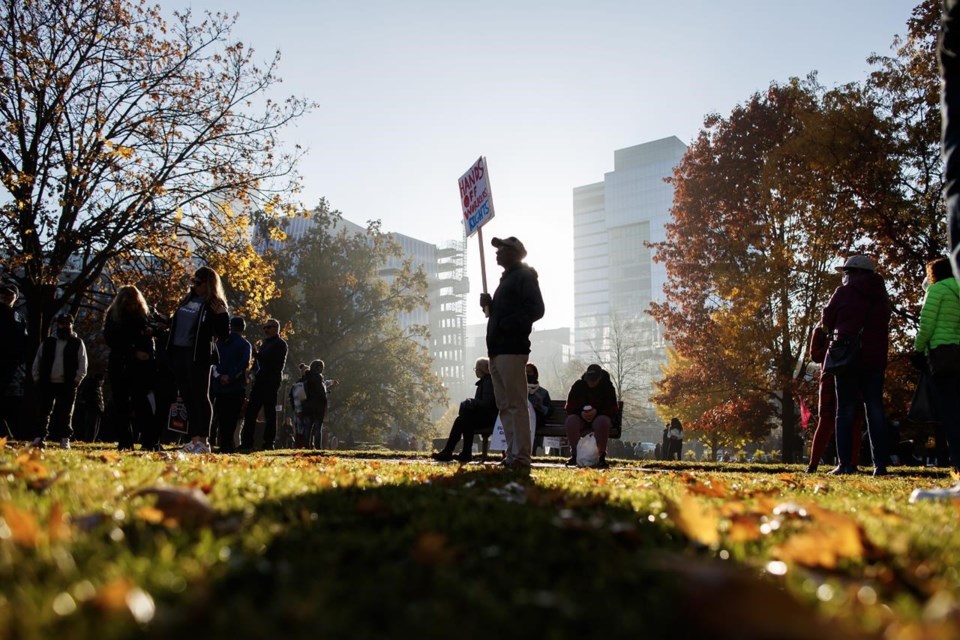Thousands of Ontario education workers are on picket lines indefinitely as of Friday in defiance of a provincial government law that has imposed a contract on 55,000 workers represented by the Canadian Union of Public Employees and banned them from striking.
Many schools are closed as a result of the job action by the union, which represents custodians, administrative staff, education assistants, bus drivers and librarians. Other unions are set to join them on the picket lines.
Here is a look at key questions related to the job action:
What is the status of the job action?
CUPE's workforce is on strike as of Friday, despite the government passing a law on Thursday prohibiting them from doing so.
The union has said it will remain on strike for an indefinite amount of time. Other teachers' unions have expressed solidarity with CUPE workers and members of the Ontario Public Service Employees Union also walked off the job in solidarity on Friday.
The government's legislation includes fines for violating the prohibition on strikes of up to $4,000 per employee per day -- potentially totalling up to $220 million for all 55,000 workers -- and up to $500,000 per day for the union .
Education Minister Stephen Lecce has said the government intends to pursue the penalties while CUPE has said it is pursuing legal advice but will pay the fines if it has to.
What is the contract that the government has imposed on the workers?
The four-year contract that prohibits strikes was imposed by government legislation after negotiations broke down between the two sides over disagreements on wage increases and other issues.
The contract lays out annual salary increases of 2.5 per cent for workers who earn less than $43,000 per year or an hourly rate less than $25.95. Workers earning $43,000 or more, or hourly rates of $25.95 or higher, will see increases of 1.5 per cent.
CUPE's workers on average make $39,000 a year and the union has said its they are generally the lowest paid in schools.
CUPE has said the government's framing of the raises is inaccurate because raises actually depend on pay scales and hourly wages. It is arguing the majority of workers earning less than $43,000 per year would not get 2.5 per cent increases.
The government had initially offered annual raises of two per cent for people making less than $40,000 and 1.25 per cent for all others. CUPE had initially sought annual salary increases of 11.7 per cent per year, then cut its wage proposal by more than half in an effort to reach a deal.
The law also bans strikes and invokes the notwithstanding clause of the Charter of Rights and Freedoms to pre-emptively protect it from being struck down as a result of notwithstanding potential constitutional challenges.
What options does the union have to push back?
The union has vowed to fight the government's fines, and has said it will seek outside help to pay them if necessary. Unifor, another major Canadian union, has pledged to donate $100,000 in support.
CUPE has said it's seeking legal advice on next steps related to fines.
Potential legal challenges of the government's legislation are also a possibility.
What is happening at the labour relations board?
The government is seeking to have the Ontario Labour Relations Board declare the workers' walkout illegal and actions by union leaders unlawful while seeking to have any strike activity ceased. Lecce filed an application against CUPE with the labour board on Thursday.
A hearing began late Friday afternoon and was set to continue Saturday with main arguments.
What is the role of the notwithstanding clause?
The notwithstanding clause allows the legislature to override portions of the Charter for five years.
The government invoked the controversial clause -- for the second time in the province's history -- to keep the law in force in the event of potential constitutional challenges.
Labour experts and unions have raised concerns about its use, saying they fear it could embolden other governments to quash strike rights without constitutional recourse. Lecce has defended it, saying it is to prevent disruptions to classroom learning because of strikes or litigation.
It's believed to be second time in Canadian history the notwithstanding clause has been used in back-to-work legislation -- the first in Saskatchewan in 1986 -- and the first time a government has included the clause in legislation before a strike began.
It's the second time Premier Doug Ford's Progressive Conservative government has invoked the notwithstanding clause. In June 2021, it did so to limit third-party election ad spending by restoring parts of the Election Finances Act that had previously been declared unconstitutional. The government argued the move was necessary to protect elections from outside influence, while critics accused the government of trying to silence criticism.
What does this mean going forward for Ontario schools and parents?
CUPE has not laid out any specifics that would lead to them ending the walkout. That means schools could be closed for an indefinite amount of time.
The union has advised parents to make alternate child care arrangements into next week.
Many school boards across the province closed schools Friday, with some moving to remote learning. The Toronto District School Board has said schools would remain closed for the duration of the strike, though several others have not yet outlined plans for next week.
This report by The Canadian Press was first published Nov. 4, 2022.
Holly McKenzie-Sutter, The Canadian Press

